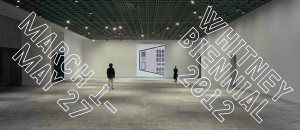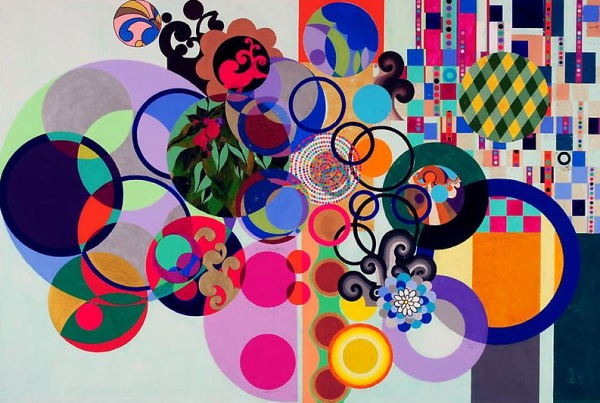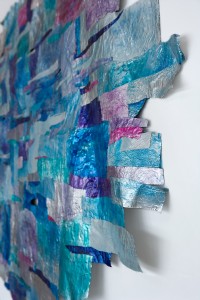Inspirational quote-of-the-month – something savory and nutritional for your creative self…
Boredom is very important. Boredom is the origin of any good idea.
– Francesco Clemente
Interview with Charlie Rose August 20, 2008
I have so many ideas and so much creative energy I cannot remember the last time I experienced boredom. On the advice of one of my mentors, I’ve decided this year to focus on a single body of work (Well, I need to complete some other projects first, but believe me, I have completely stowed away some works-in-progress because my tendency is to go off in a million directions!) I’m actually kind of excited to see if I experience some boredom in the studio and I’m wondering where it will lead me.
What do you think? Does boredom help you or hinder you? Please share your thoughts below. I’m curious to know.
Leave a Comment
Is That All There Is?
A dear artist friend of mine recently finished a major commission. (SO excited for her and proud of her!) However, she mentioned she’s feeling a little let down after all the hard work she put in to get it finished on a tight deadline. She’s left with that feeling: Is that it?
It reminded me of a story I heard about an artist who achieved the distinction and recognition of being included in the Whitney biennial in her early 20s- an achievement that many contemporary American artists covet and aspire to. And yet, as she was riding the bus after the opening and she described an empty feeling and a similar thought. So that was it?
(Depending on where you are right now with your career you may be saying to yourself, If only I had such problems!)
But this kind of post-event let down brings up a question all of us face: Why are we doing this stuff in the first place? Because I’m sure many of you, like me, have these benchmarks – things we want to achieve because we think we’ll feel better when we get them.
I’ll be really happy when…
I get in that gallery.
Someone buys my work.
I get in the Whitney Biennial.
We might get so caught up in reaching that goal, completing a body of work or preparing for an exhibition that we forgot to feel happy with where we are right here and now. We may neglect to appreciate the present moment and our current situation.
I know in my own life I have had different dreams for my art. For instance, when I was in my 20s I always wanted to travel abroad for my art and have shows in different countries. I dreamed of exhibiting my work in museums. Now that I’ve achieved these things I want even bigger things. I want to be in bigger museums and better known venues. I compare myself to others who have achieved things I have not and I forget to appreciate all that I have created and all that I have achieved. This isn’t good enough. What’s next?
There are always things to appreciate no matter where you are in your career. It’s great to always be looking forward and to have big dreams visions and goals to help us move forward.
But actually the true joy and excitement is in the day-to-day!
We live only in the present moment.
Honestly, nothing else exists. Everything else is just dreams (the future) or memories (the past).
We got in this racket to enjoy the creative ride!
Every dream or goal is to inspire some kind of fun action that we can savor while we are in the moment.
Moment by moment by moment.
Contrary to popular myth it’s not about some kind of arrival, some pinnacle, some accomplishment.
Think for a moment about all the unfulfilled dreams and wishes you have currently for your creative or professional life. Now ponder what exactly is it that you hope you will feel when you’ve achieved this dream? Will you feel more successful? Will you feel happier because you’ll feel validated as an artist? Will you feel better when your work is recognized? Or that other people will take you more seriously as an artist?
Is there a way you can validate yourself right now? How can you appreciate or recognize yourself as you are in your current s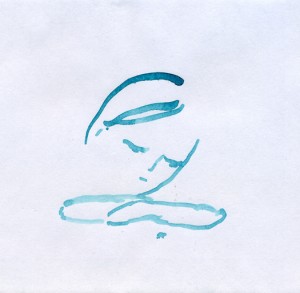 tate?
tate?
Now, pause to savor this very moment. Breathe deeply. Feel your body against the chair, hear the hum of your computer. Receive the sounds around you near and far. The drip of the faucet, a bird, the neighbor’s thumping bass? Notice the colors and textures in your vicinity. Close your eyes and allow a faint smile to lighten your lips. Can you keep breathing and relaxing until you can touch on the exquisiteness and the preciousness of this present moment?
I’d love it if you’d share in the comments below something small (or big!) that you treasure and cherish in your current life. Be it the fact that you are blessed to have a box full of art supplies to make your work, or the fact that you have a space to work in or the fact that you have these gifts or skills or you have a family member or a friend or a teacher who is supportive of your endeavors.
Isn’t it wonderful that I have this connection to my creativity?
How great it is that I have had ideas and new ones keep flowing through me!
Isn’t it sweet that I am reading this article because I’m committed to supporting myself mentally, emotionally spiritually as a creative person?
Whatever it is, I invite you to appreciate that now and do not let go of your dreams!
Leave a Comment
Remember How Much Fun Paint Can Be?
Do you remember the first time you painted? The pure joy of smushing paint about? The miracle of watching colors interact? The visceral thrill of seeing just what the stuff would do?
Sometimes, as we gain skills and get more “serious” about art, it’s easy to get caught up in outcomes and we forget just how fun paint can be as a material. But don’t you find that playfulness is often where you best “serious” discoveries occur?
Pouring with acrylics can take just about anyone back to that immediate delight of handling pure color. Here is a video to show you a basic technique with pouring :
But you ought to know there is SO MUCH more it can do! For instance, have you seen Brazilian painter Beatriz Milhazes’ exuberant canvas collaged with layers of acrylic sheets in eyepopping colors and forms?
Image courtesy of James Cohan Gallery
I created this piece using pouring medium and string gel combined. See my post here for video with details on how I did it.
Here is list of materials that I used that will help you get started:
Happy Painting!
Leave a Comment
Meander Time
The other day in the studio I was reminded of how important it is for me to have what I like to call “meander time”.
Meander time is that unstructured, unproductive, unhurried envelope in which there are no goals, no urgency towards completion, only a free and easy flow of listening to and following our quiet inclinations.
When I work in my studio, I generally jump in where I left off the day before. I settle easily into a humming rhythm of focus and productivity. But this time, something didn’t feel right. The process felt forced.
I paused and found a comfy place, got quiet, closed my eyes and went inward. It became clear to me that I hadn’t been allowing time recently in the studio for exploration, for browsing in books, for lying and looking at the ceiling, for staring out the window or just being.
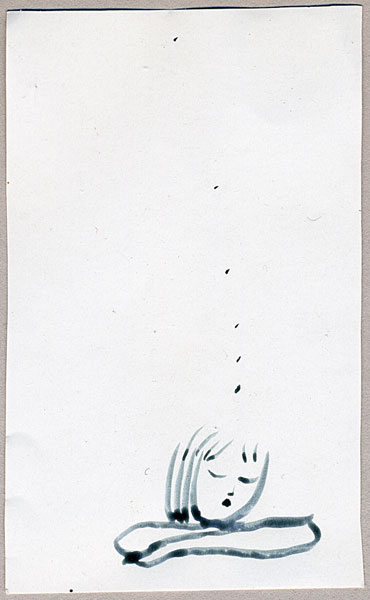 |
This is pure right brain territory.
This is when we are in a receptive state.
This when fresh, new ideas are able to flow in.
Most of us were told when young and apt to daydream that we were “wasting” time. Wasting time is frowned upon severely in a society full of people who feel so busy and strapped for time. We feel more virtuous when we are productive.
Some of my most rich and fruitful ideas come from meander time. Sometimes this means getting outside the studio – going on a walk or just sitting and being in nature. Sometimes it involves going on the studio with no particular plan and allowing myself to rest, nap, stare at the works in progress, peruse art books or leaf through boxes of old drawings or supplies. It’s really about letting go of a particular objective and following what feels right in the moment.
There’s a delicate balance we artists ride between doing and being.
Too much “being” can be a disguised form of avoidance. Too much “doing” and our creative well dries up because it is never replenished.
What about you? Have you noticed this rhythm within yourself? When have you opened up to meandering and allowed new ideas to flow in?
Leave a Comment
The hybrid artist
I just found out about Karen Atkinson an artist who has taught the business of being an artist at CalArts in Southern California for over 22 years. She also founded a company called GYST that creates business software for artists and offers other business related services for artists.
What I really appreciate about this talk is how she emphasizes that there are multiple ways to approach a career as an artist. She outlines two different models of an artist’s career – the vertical artist climbing a hierarchical ladder and the horizontal career or creating a hybrid of the two.
It’s important to remember though our contributions may not shimmer glamorously, our role is vital to our communities. Atkinson put it this way:
If you are an artist that is not interested in that vertical career and you’re not the next hot thing, then you’re sort of, like, not as important. If you don’t make a lot of money you’re not considered a very important artist.
But, I think those artists who have been pludging [sic] along, doing very interesting things either in their communities, their businesses or their daily life have much more effect on the general culture than those who work only in a vertical trajectory.
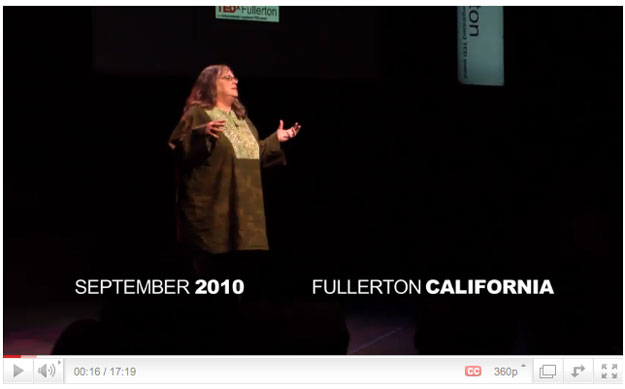 |
http://www.youtube.com/watch?v=IehUM7XxJNU
What ways can you see that your work as an artist either in the studio or in the greater world have contributed to those around you, even in small ways?
Leave a Comment
How to keep going over a long haul…
 |
|
Laura Paulini, Black Beauty |
Sometimes artworks are executed quickly. We get to experience the sweet satisfaction of completion in short order. But what about those projects that that develop over months or even years? (I’m working on one myself right now.)
How do we keep going when the project takes longer than expected?
How do we keep working when the end is not clearly in sight?
Can we enjoy the process for its own sake?
I was particularly inspired by artist Laura Paulini’s shining example of perseverance recently and am eager to share it with you.
Laura builds her acrylic and egg tempera paintings by applying the paint in rows and patterns of dots, each dot of paint painstakingly applied with the end of a chopstick.
 |
Each 40 x 40″ panel takes months to complete, row by row, dot by dot.
Nine months ago, she decided to undertake a slightly larger piece. For this 60″ x 60″ panel she also chose to create a base layer of stripes over which she will add the dots.
It took her seven months, working about four days a week to paint all the stripes for the first layer. That’s approximately 8,150 stripes each month for a total of 57,000!
I asked Laura how she kept going during a process that takes such meticulous care, attention and time.
 |
When I started in July, I had hoped to be done by Thanksgiving. When that didn’t happen, I thought maybe by Christmas. After that, I stopped thinking too much about an expected end date and surrendered even more deeply to the process knowing I would, indeed, some day actually finish and that I just needed to keep going.
What were some of the hardest periods?
One hard period was around the holidays when time in the studio was getting compromised by outside responsibilities and distractions. I felt great concern about getting too far away from the piece and loosing momentum. Luckily, I was able to get to the studio often enough and keep the piece going.
What were some of the phases of your process that you went through during this time?
The period from October until January (the dreaded “middle”) was difficult because the density of the stripes hadn’t yet achieved that “critical mass” when the colors dance off one another and create a blend that moves the viewers eye across the piece. I felt like I could work for eight hours and then stand back and not really see any change. Once the density of the stripes was closer to final (near the end of January), each day in the studio felt very satisfying and I could make rather large “shifts” in the rhythm of the piece, getting it to work the way I had hoped. The last few weeks were really a pleasure and I found I had ambivalent feelings about finishing.
 |
How did you carry on when you didn’t feel like working on it?
I simply tried to honor my commitment to my studio practice and show up. Once there, I quickly changed in to my work clothes, started mixing my colors, and got to work. I tried to let negative thoughts and doubts dissipate as quickly as possible and respond to them with humor. In the evenings, I would try and look at books or films that inspire and guide me. My husband and my friends have also been incredibly supportive and their enthusiasm and excitement about the piece is also very encouraging to me.
Were you tempted to take a break and work on other things?
Not really. I feel privileged to have been able to focus solely on this piece and to give myself the space and time to do it. I really never saw myself as being able to give much to another piece while this one is in process – and didn’t really want to. I’m just now being able to actually think about what might come next.
Were you tempted to give up?
Sure. It’s very easy to think of all the reasons why, too! So far I haven’t given up on this piece – or on my desire to make a contribution to the discipline of painting. I hope I can say that a year from now, two years from now, five years from now. We’ll see…
Leave a Comment

